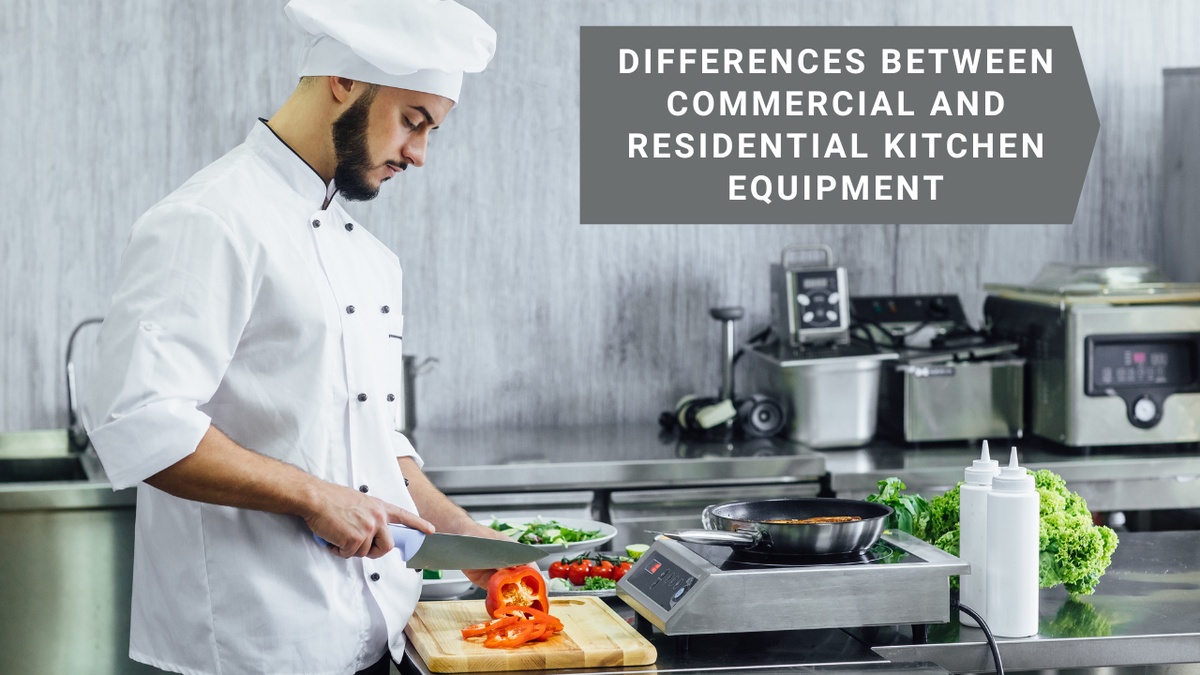Introduction:
In the culinary world, the kitchen is not merely a space for preparing meals; it's the heart of any food-related operation, whether it's a bustling restaurant, a cozy café, or a home kitchen. While the essence of cooking remains the same across all these settings, the tools and equipment used can vary significantly. In particular, the contrast between commercial kitchen equipment found in restaurant supply stores and regular kitchen equipment used in households is noteworthy. Understanding these distinctions is essential for both aspiring chefs and homeowners looking to upgrade their kitchen arsenal. In this comprehensive guide, we delve into the differences between commercial and residential kitchen equipment, shedding light on their unique features, functionalities, and purposes.
Commercial Kitchen Equipment vs. Regular Kitchen Equipment: A Comparative Analysis
1. Design and Construction:
Commercial kitchen equipment is engineered to withstand rigorous, high-volume usage characteristic of restaurant settings. It is crafted from heavy-duty materials such as stainless steel, which offers durability, resistance to corrosion, and ease of cleaning. In contrast, regular kitchen equipment, designed for intermittent domestic use, may feature lighter materials like plastic or aluminum. While residential appliances prioritize aesthetics and space-saving designs, commercial counterparts prioritize functionality and robustness.
2. Size and Capacity:
One of the most apparent disparities between commercial and residential kitchen equipment is their size and capacity. Commercial appliances are typically larger and boast higher capacities to accommodate the demands of a commercial kitchen. From industrial-sized ovens capable of baking dozens of trays simultaneously to mammoth refrigerators capable of storing vast quantities of perishables, these appliances are built to handle large-scale food production. In contrast, residential kitchen equipment is more compact and tailored to the needs of smaller households, with capacities suitable for family-sized portions.
3. Performance and Power:
Commercial kitchen equipment is engineered for superior performance and power to meet the stringent requirements of professional kitchens. Commercial ovens, for instance, feature higher BTU (British Thermal Unit) outputs, enabling rapid preheating and cooking of large batches. Similarly, commercial refrigerators boast robust cooling systems to maintain optimal temperatures even amidst frequent door openings. Residential appliances, while adequate for household cooking needs, may not offer the same level of efficiency and power as their commercial counterparts.
4. Specialized Functionality:
Commercial kitchen equipment often incorporates specialized features tailored to the unique demands of professional chefs. From charbroilers and griddles with precise temperature controls to dough mixers with variable speed settings, these appliances are designed to enhance productivity and culinary creativity in a commercial setting. In contrast, regular kitchen equipment tends to offer more generalized functionalities suitable for everyday cooking tasks encountered in a household setting.
5. Regulatory Compliance:
Commercial kitchen equipment must adhere to strict health and safety regulations imposed by governing authorities. These regulations dictate factors such as sanitation standards, energy efficiency requirements, and emissions limits. Consequently, commercial appliances undergo rigorous testing and certification processes to ensure compliance. In contrast, residential kitchen equipment is subject to less stringent regulations, although they must still meet basic safety and performance standards.
6. Cost and Investment:
Unsurprisingly, the cost of commercial kitchen equipment surpasses that of regular kitchen equipment due to its robust construction, enhanced performance, and specialized features. Moreover, commercial appliances often require professional installation and maintenance, adding to the overall investment. While the upfront cost may deter some homeowners, commercial-grade equipment is regarded as a long-term investment for restaurateurs, offering reliability and durability that can withstand years of continuous use.
Conclusion:
In conclusion, the disparities between commercial and residential kitchen equipment extend far beyond mere size and capacity. From design and construction to performance and regulatory compliance, each category of kitchen equipment serves distinct purposes dictated by its intended setting. While commercial kitchen equipment found in restaurant supply stores caters to the demanding needs of professional chefs and commercial establishments, regular kitchen equipment meets the requirements of households seeking practicality and convenience. By understanding these differences, chefs, restaurateurs, and homeowners alike can make informed decisions when selecting the right tools for their culinary endeavors.


No comments yet